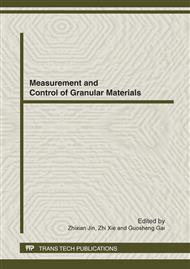p.228
p.233
p.237
p.241
p.246
p.250
p.254
p.259
p.263
Growth of Ceramic Coatings on LY12 Aluminum Alloys by Micro-Arc Oxidation and Microstructure Properties of Ceramic Coatings
Abstract:
LY12 aluminum alloy samples were treated by microarc oxidation in sodium metasilicate electrolytes. The effects of treatment time on cell violate and ceramic coating thickness were investigated. The results indicate that the micro-arc oxidization process was divided into two stages, at the first stage, the cell voltage increased linearly at a very high rate of 70 V/min, at the second stage, in the range of 430-470 V, the cell voltage reached a relative stable value. The thickness of the coating increased linearly at the whole stage with increasing treating time. XRD analyses indicate that the ceramic coatings fabricated on the surface of aluminum alloys by micro-arc oxidization are composed of Al phase Al2O3 phase. SEM show that the maximum porosity of the ceramic coatings with distributing uniformly pore diameter are decreased with the increasing treatment time.
Info:
Periodical:
Pages:
246-249
Citation:
Online since:
April 2012
Authors:
Price:
Сopyright:
© 2012 Trans Tech Publications Ltd. All Rights Reserved
Share:
Citation:


